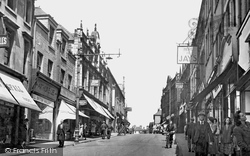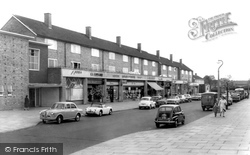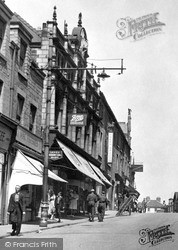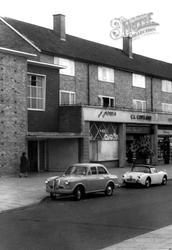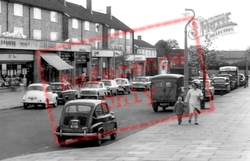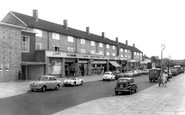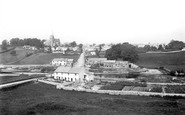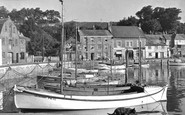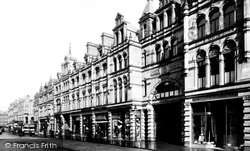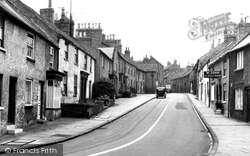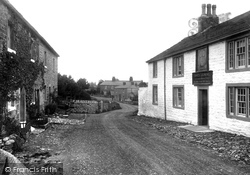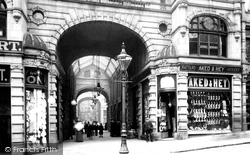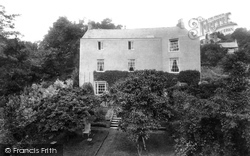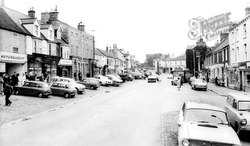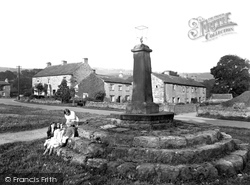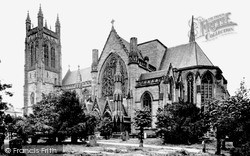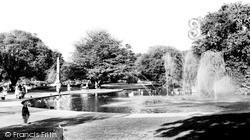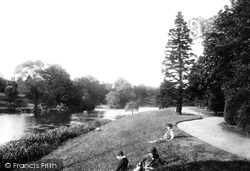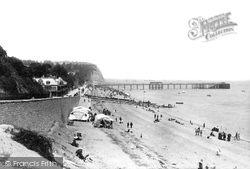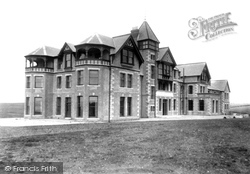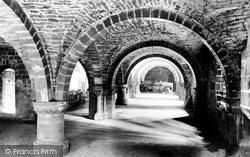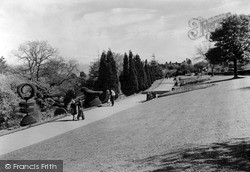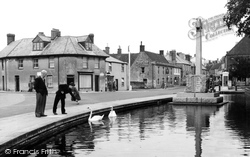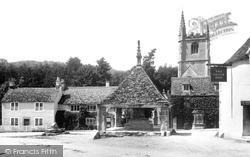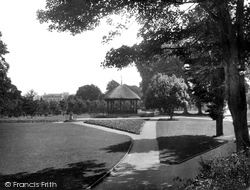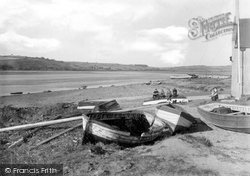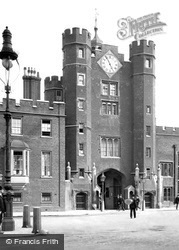Places
3 places found.
Those places high-lighted have photos. All locations may have maps, books and memories.
Photos
5 photos found. Showing results 1 to 5.
Maps
1,030 maps found.
Memories
58 memories found. Showing results 1 to 10.
Chudleigh Knighton Cider Memories
I lived in Chudleigh Knighton when I was 11 years old until I was 15. That was 1932 till 1936. I was taught at the lovely school there. The head mistress was Miss Gill and her assistants Miss Bray and ...Read more
A memory of Chudleigh Knighton in 1930 by
Borehamwood Shops
This picture is of the shops in Leeming Road and not the main shopping centre in Borehamwood, fondly known as the village. Leeming Road shops are in fact about a mile away from the main town. I would love to see any photos of the "village" if anyone has any.
A memory of Borehamwood by
Lunchtime Bopping In Leeming Road.
Does anybody remember the radio shop which also sold records and record players? They used to play the modern hits over a loudspeaker in the doorway and it wasn't long before pupils from Lyndhurst school (me ...Read more
A memory of Borehamwood by
Bashall School.
I also went to Bashall school, and remember Miss Arms and Miss Stanley. I have a school photo which must have been taken about 1952. After Miss Stanley, we had Miss Webster and Mrs Leeming. My older brother and my twin brother ...Read more
A memory of Bashall Eaves in 1949 by
Gods Little Corner
I first went to Streatley in 1965 where I started to court my wife whose name was Susan Adams then. We used to go for walks over Sharpenhoe Clappers and come back to the Chequers Pub and see Hilda and ...Read more
A memory of Streatley in 1966 by
My Childhood In Burton In The 50's And 60's
I was born in the village in 1949, in an end terrace No.1 Woodview. It was down a small road in the centre of the village and at the top, I believe at one time there was a timber yard/sawmill. ...Read more
A memory of Burton in Lonsdale by
My Early School Years In Mill Hill 1943 1950
I have few memories of my primary school which was in a private house in Croft Close a turning off of Marsh Lane, but I do remember being very happy there. This was during the latter war years. ...Read more
A memory of Mill Hill by
Selby 1940s
During 1943 we were evacuated to Kelfield after being bombed out in London and Manchester, being an RC our nearest RC school was St.Mary's in Selby. My sister (older by 2 years) I was 5 used to walk from Kelfield to Selby every day to ...Read more
A memory of Selby by
Born And Bred In Wortley Leeds
I was born in Wortley in 1947, went to Upper wortley School, then Silver Royd CS, then worked at Yorkshire Engineering Supplies in Upper Wortley Road. I met my husband in the Hanover Arms, Lower Wortley ...Read more
A memory of Lower Town in 1947 by
The Girl Maureen
She was launched as a rowing lifeboat, Docea Chapman, and came to Padstow as a relief boat. She was only on station for nine moths then laid up. I am the girl Maureen. Father bought her in 1952 and converted her into a fishing ...Read more
A memory of Padstow in 1960 by
Captions
40 captions found. Showing results 1 to 24.
Going back under the railway viaduct, we ascend Toothill Lane to its junction with Leeming Street, which crosses the foreground.
It was designed by the local firm Leeming and Leeming of Northgate, with a lofty roof supported by richly-decorated ironwork.
Bedale is also just off the A1 and on the route into Wensleydale from Leeming Bar.
Again, we see a large painted board; this one proclaims that James Leeming was proprietor of the Three Millstones Inn on the right of our photograph.
Building commenced on the site of the former red brick market in 1891 to the designs of the local architects Joseph and John Leeming.
Then it became a hotel, trading as Stile House Pension, run by Ernest James Leeming.
The Fine Fare Supermarket (extreme left of the picture) has now replaced the Co-op Snack Bar, and although Leemings the chemist (next door) remains, Pallister's cake shop beyond has now become Shipmans
Again, we see a large painted board; this one proclaims that James Leeming was proprietor of the Three Millstones Inn on the right of our photograph.
Happily the line, from Leeming to Leyburn, reopened in July 2003, with plans to extend to Hawes and Garsdale Head in future years.
The River Leam and All Saints' Church from the suspension bridge.
The gardens on the banks of the Leam were laid out from the 1830s onwards. They are named after Dr Henry Jephson, who was responsible for planning much of the town.
A quiet moment on the banks of the Leam. Jephson Gardens were laid out on land leased from Edward Willes of Newbold Comyn.
By the 1870s, Robert Forrest knew that he could not stop the 'rabble' and their use of the beach, which he deemed 'not legitimate'.
A quiet moment on the banks of the Leam. Jephson Gardens were laid out on land leased from Edward Willes of Newbold Comyn.
It is on an extremely windswept location with not a tree or bush in sight, but no doubt the sea views and bracing air were deemed beneficial to guests.
The Addleshaw Tower was completed in 1974, its construction deemed necessary owing to the unsafe condition of the bell-frame in the central tower.
The 1950s proved somewhat of a flat period for the park. 1951 witnessed the scrapping of its bandstand – a £62 repair estimate was deemed too costly, while 1956 saw the removal of its weather station.
It was home to a pair of swans for years until it was deemed unsuitable, and for the Millennium a swan statue was erected in the water near the war memorial.
Nowadays, deemed the prettiest village in England, it relies on tourism for its income.
In the early 1960s it was deemed unsafe and demolished.
When the roundabout was built in the 1930s, it was deemed such a novelty that it starred on specially issued local postcards, the handsome buildings in the background playing only a minor
The lifeboat house was deemed necessary by the local authorities in view of the dangerous channels and sandbanks already noted.
In the picture the wooden Tudor gates are open for public access, unlike today when guardsmen stand outside a closed gate - increased security is deemed necessary now.
When the roundabout was built in the 1930s, it was deemed such a novelty that it starred on specially issued local postcards, the handsome buildings in the background playing only a minor role.


